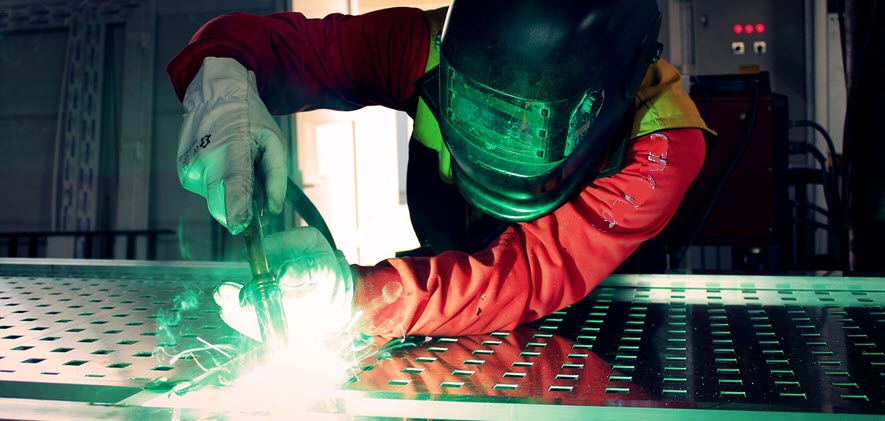
5 Essential Welding Safety Tips

Welding is a common practice in industrial workplaces across the country. Unfortunately, welding accidents and injuries are common, as well. Welding accidents comprise about 25 percent of fatal occupational accidents every year. And the Bureau of Labor Statistics reports that the injury rate for welding operations is 100 times worse than the average injury rate for all other workers.
These facts make it essential to follow best safety practices and OSHA guidelines. If you are a welder or you supervise workers who weld, you’ll appreciate these 5 essential welding safety tips and resources.
1. Use Appropriate Personal Protective Equipment
When welding, it is immensely important to protect the eyes and face. Acceptable personal protective equipment (PPE) should include helmets, hand shields and goggles. Welding helmets that feature filter plates can help protect welders from sparks, arc rays and spatters. According to OSHA, hand shields and helmets should adequately protect the face, neck and ears from direct radiant heat.
2. Protect Eyes From the Welding Arc’s Rays
It only takes a few seconds of exposure to a welding arc’s rays for the eyes to experience “arc flash,” a painful condition that often appears hours after exposure. To prevent such a condition, welders should utilize approved safety glasses with ear protection and wide shields. Safety helmets should also be fitted with filter shades to protect the face and eyes. Workplaces can also install barriers or screens to protect the eyes of others from the arc.
3. Encourage Clean, Organized Welding Spaces
Welding injuries are far less likely to occur in well-organized, clean workspaces. To prevent injuries, clearly label and mark the place for each equipment piece. The welding area should only include equipment and tools the welder uses, nothing else. Welding tables should be adjustable so the welder can work at an appropriate height.
4. Launch a Welding Safety Program
If your welding employees realize your company is serious about safety, they will take safety seriously themselves. To show that your company places a strong emphasis on personal safety, consider launching a welding safety program. An on-going welding safety program keeps all welders on the same page and offers them the most up-to-date information as new PPE and technologies become available.
5. Create a Fire Safety Plan
If you are responsible for a workplace that employs welders, you should take the time to create a fire safety plan. Your welders should familiarize themselves with this plan and take it seriously. Your fire safety plan should:
• Identify significant fire hazards
• Outline procedures for notifying fire response agencies
• Lay out an evacuation route
• Outline procedures to account for all employees after evacuation
Having an easy-to-understand fire safety plan can save countless lives.
These 5 welding safety tips are are a good start toward ensuring the safety of welders in your workplace. Use the resources below for additional information as you plan your complete welding safety program.

